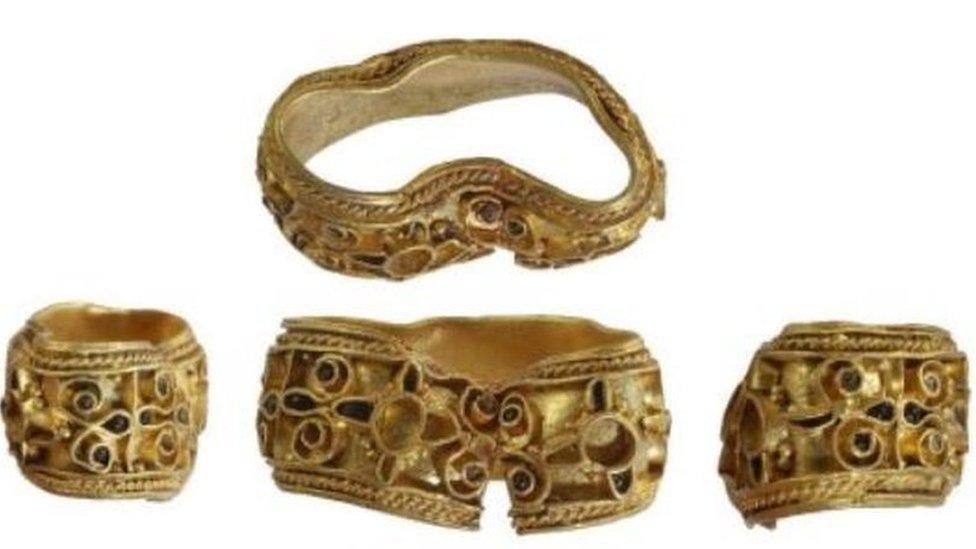Anglo-Saxon treasure found in Norfolk has 'no direct parallel'
- Published

The ruler on the left is not to scale, but it shows the size of the gold, gem and cut glass band in millimetres
A "curious" piece of Anglo-Saxon treasure has no "direct parallel" to suggest how it was used, a museum said.
A curved gold band with gem and glass settings was discovered in a field in Aldborough, Norfolk, in 2018.
The British Museum's Portable Antiquities Scheme said its "function is unclear and no direct parallel was forthcoming during research".
Norwich's Castle Museum said it was keen to acquire the piece once it was valued.
The band, which is about 10mm in height and 30mm diameter, was described as a "curious piece" by the museum and was declared treasure by the Norfolk coroner.
The object contains a minimum of 10% precious metal and dates from the Anglo-Saxon period.
The metalwork technique and decoration date it to the 10th or 11th Century, according to British Museum.
The diameter and thickness suggest that it is more likely to be a decorative element from a larger object.
Possibilities include it being a mount from a rod-like object, metalwork from a religious object such as a cross, from furniture or maybe a sword hilt.
The inquest decision means the finder and landowner will share the proceeds from any sale.